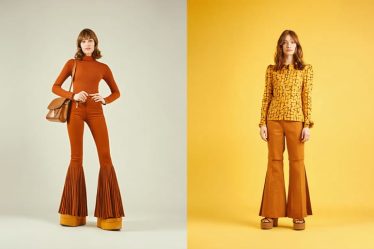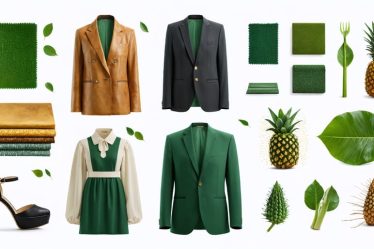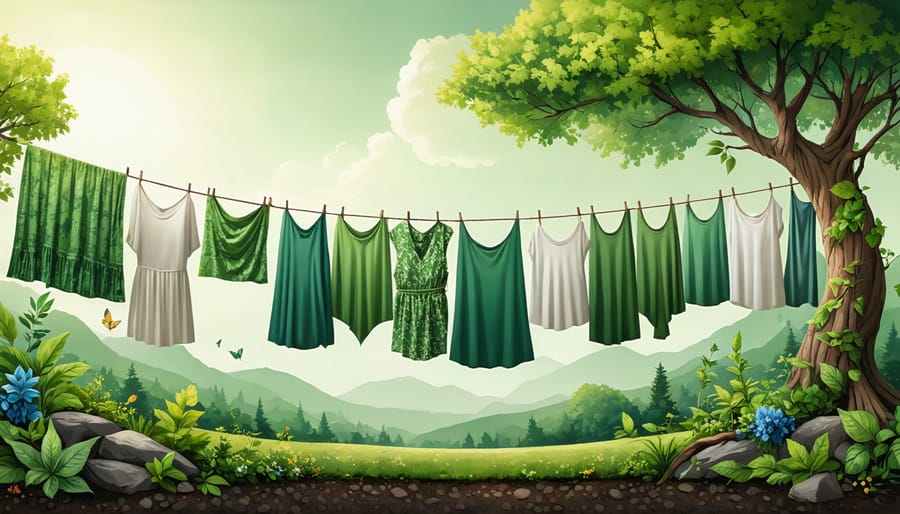
In a world increasingly focused on environmental consciousness, eco-friendly fabric manufacturers are revolutionizing the textile industry by creating sustainable alternatives that don’t compromise on style or quality. From recycled polyester made from ocean plastics to organic cotton grown without harmful pesticides, these innovative companies are proving that quality sustainable fashion can coexist with environmental responsibility. As consumers become more aware of fashion’s environmental impact, these manufacturers are leading the charge in developing materials that minimize water usage, reduce carbon emissions, and eliminate toxic chemicals from the production process. Whether you’re a conscious consumer, fashion designer, or business owner looking to make more sustainable choices, understanding the landscape of eco-friendly fabric manufacturing is crucial for making informed decisions that benefit both your wardrobe and the planet.
Why Traditional Fabric Manufacturing Needs a Green Makeover
The True Environmental Cost of Fast Fashion
Have you ever wondered about the true cost of fast fashion? The numbers are startling. A single cotton t-shirt requires about 2,700 liters of water to produce – that’s enough to keep one person hydrated for 2.5 years! Traditional fabric manufacturing isn’t just thirsty; it’s also one of the biggest polluters worldwide.
In my conversations with industry experts, I’ve learned that conventional textile production releases harmful chemicals into our waterways, with synthetic dyes accounting for 20% of global water pollution. The carbon footprint is equally concerning – fashion manufacturing contributes more greenhouse gases than international flights and maritime shipping combined.
What really opened my eyes was discovering that many of these environmental costs are completely unnecessary. There are better ways to create beautiful fabrics, and that’s where eco-friendly manufacturers are making such an important difference.
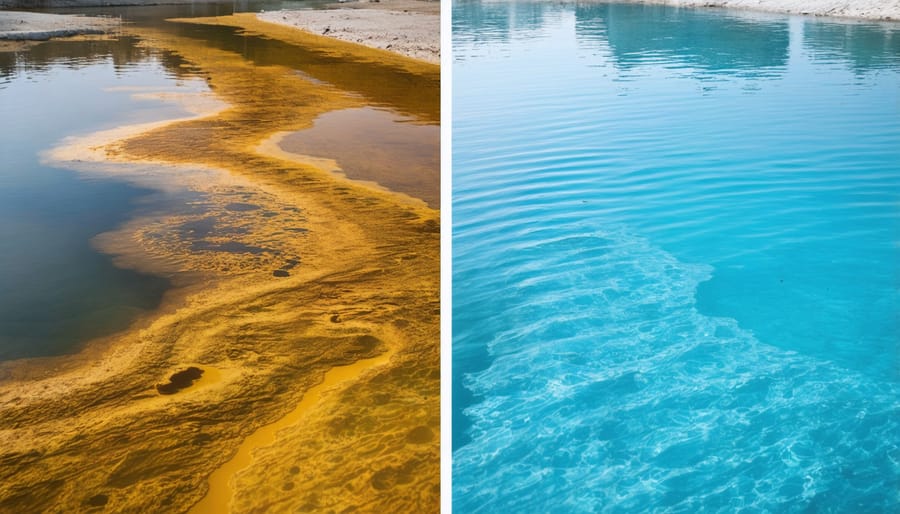
What Makes a Fabric Truly Eco-Friendly?
When I first started exploring eco-friendly fabrics, I quickly learned that true sustainability goes far beyond just using organic materials. Today’s conscious manufacturers follow strict criteria to earn their green credentials. Look for certifications like GOTS (Global Organic Textile Standard) and OEKO-TEX, which verify that fabrics are produced without harmful chemicals and under fair working conditions.
A truly eco-friendly fabric considers its entire lifecycle – from raw material sourcing to end-of-life disposal. This means using renewable or recycled materials, implementing water-saving production methods, and ensuring minimal waste through efficient cutting and production processes. Energy consumption is another crucial factor, with the best manufacturers using renewable energy sources and optimizing their production to reduce their carbon footprint.
It’s also worth noting that transparent supply chains and fair labor practices are essential components of sustainable fabric production. The most reliable manufacturers will openly share their processes and certifications, making it easy for consumers to make informed choices.
Leading Innovators in Sustainable Fabric Production
Recycled Fiber Pioneers
I recently visited a fabric trade show where I was amazed to discover how far recycled textiles have come. Gone are the days of scratchy, uncomfortable recycled materials – today’s pioneers in recycled fiber are creating fabrics that are both sustainable and luxuriously soft.
Leading the charge is Repreve, a company that’s transformed over 25 billion plastic bottles into high-performance fibers. Their innovative process creates materials that feel identical to virgin polyester while significantly reducing environmental impact. What I love most about their approach is how they’ve partnered with major fashion brands to bring recycled fabrics into mainstream clothing.
Another game-changer is Lenzing, whose Refibra technology combines recycled cotton scraps with wood pulp to create new fibers. Having touched these fabrics myself, I can confirm they’re incredibly soft and perfect for everyday wear. They’ve shown that post-consumer waste can become premium textile products.
EcoFi and Unifi are also making waves with their innovative approaches to fiber recycling. These companies collect everything from old fishing nets to industrial waste, transforming them into durable, fashion-forward materials. What’s particularly exciting is how they’re working with smaller, independent designers to make sustainable fabric choices more accessible to everyone.
The best part? These manufacturers are proving that choosing recycled materials doesn’t mean compromising on quality or style. They’re setting new standards for what sustainable fashion can be, making it easier for all of us to make eco-conscious choices.
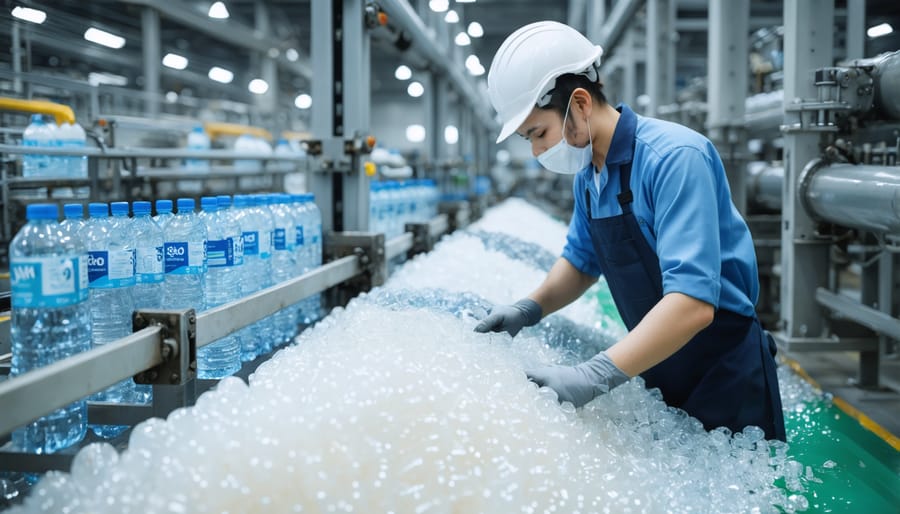
Natural Fiber Revolutionaries
When I first discovered organic cotton, I thought I’d reached the pinnacle of eco-friendly fabrics. Little did I know that a whole world of innovative natural fibers was waiting to be explored! Today, several pioneering companies are revolutionizing the textile industry with their creative approaches to sustainable materials.
Veja, a forward-thinking manufacturer in Brazil, has made waves with their innovative use of wild rubber and organic cotton blends. Their commitment to working directly with local communities ensures both environmental sustainability and social responsibility. Meanwhile, in India, Khaloom is transforming traditional handloom techniques by incorporating banana fiber into their textiles – yes, you read that right, banana fiber!
One of my personal favorites is Lenzing, an Austrian company that’s mastered the art of transforming wood pulp into luxuriously soft fabrics through their closed-loop production system. Their TENCEL™ Lyocell isn’t just eco-friendly; it’s also incredibly comfortable and versatile.
Let’s not forget about hemp pioneers like EnviroTextiles, who are working tirelessly to demonstrate how this ancient fiber can be transformed into modern, sophisticated textiles. Their hemp-based fabrics require minimal water and no pesticides to produce, making them a true champion of sustainability.
These companies aren’t just manufacturing fabrics; they’re reimagining our relationship with textiles while preserving traditional craftsmanship and supporting local communities. It’s inspiring to see how they’re proving that luxury, comfort, and sustainability can indeed go hand in hand.
How to Identify and Source Eco-Friendly Fabrics
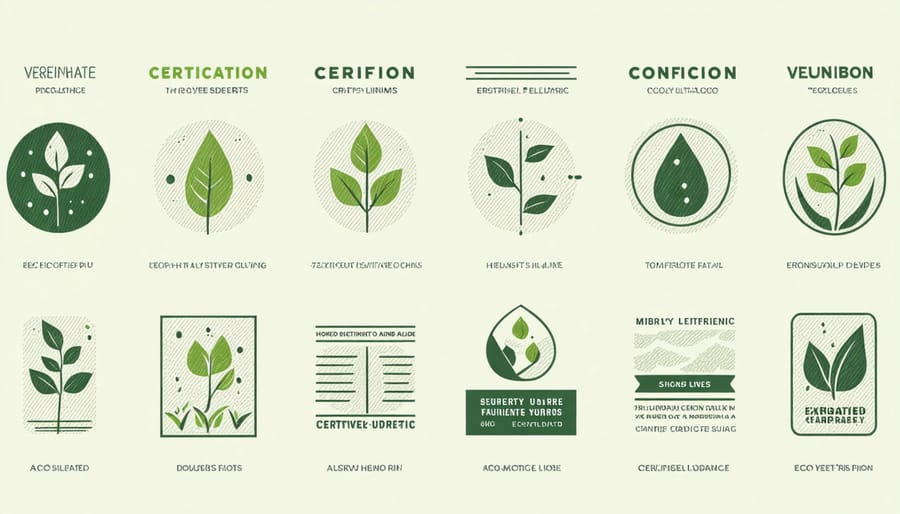
Key Certifications to Look For
When shopping for eco-friendly fabrics, certifications are your best friends in navigating the sometimes confusing world of sustainable textiles. I’ve learned that looking for these trustworthy labels can make all the difference in making conscious choices.
The Global Organic Textile Standard (GOTS) is considered the gold standard in sustainable fabric certification. It ensures that materials are at least 95% organic and that manufacturers follow strict environmental and social criteria throughout the production process.
OEKO-TEX Standard 100 is another certification to watch for. While browsing fabric stores with my eco-conscious friend last month, she taught me that this label guarantees the textiles are free from harmful substances and safe for human use.
For those passionate about protecting our forests, look for Forest Stewardship Council (FSC) certification on materials like lyocell and viscose. This ensures the wood pulp used comes from responsibly managed forests.
The Cradle to Cradle certification is also worth noting, as it evaluates products based on their overall environmental impact, from material health to social fairness. When you spot these certifications, you can feel confident about your sustainable fabric choices.
Where to Find Sustainable Fabrics
Finding sustainable fabrics has never been easier, thanks to a growing network of eco-conscious retailers and suppliers. I recently discovered several fantastic marketplaces that have become my go-to sources for earth-friendly textiles.
For those who prefer shopping online, platforms like Organic Textile Company and Nature’s Fabrics offer extensive collections of certified organic and sustainable materials. These websites typically provide detailed information about their sourcing practices and environmental certifications, making it easier to make informed choices.
If you’re like me and enjoy touching fabrics before purchasing, many major cities now have specialty stores focusing on sustainable textiles. Local fabric districts often have at least one or two vendors specializing in eco-friendly options. I love visiting these shops because the staff typically shares my passion for sustainability and can offer valuable insights about different materials.
Trade shows and textile fairs are another excellent resource, with events like the Sustainable Textile Summit bringing together manufacturers and buyers. Many of these events are now offering virtual components, making them accessible to everyone interested in sustainable fashion.
Don’t forget to check out smaller, independent sellers on platforms like Etsy, where you can often find unique, sustainably-sourced fabrics while supporting small businesses.
Making the Switch: Simple Steps Toward Sustainable Fashion
Making the switch to sustainable fashion doesn’t have to feel overwhelming. I remember standing in my closet, feeling guilty about my fast-fashion choices, but taking small steps made all the difference. Let’s break down how you can begin your eco-friendly fashion journey with confidence.
Start by doing a mindful closet audit. Look at your existing clothes’ tags and note which materials dominate your wardrobe. This awareness will help you make better choices moving forward. When shopping for new pieces, seek out natural fibers like organic cotton, hemp, and Tencel, which have a lower environmental impact.
Many eco-chic brands now offer beautiful, wearable pieces made from sustainable materials. Consider investing in versatile basics made from these eco-friendly fabrics – they often last longer and feel better against your skin.
Don’t feel pressured to replace everything at once. Instead, adopt the “one in, one out” rule: when you need to replace an item, choose a sustainable alternative. Look for certification labels like GOTS (Global Organic Textile Standard) or OEKO-TEX to ensure you’re buying genuine eco-friendly materials.
Care for your clothes mindfully to extend their life. Wash in cold water, air dry when possible, and repair small damages instead of replacing items. Join local clothing swap groups or consider renting special-occasion outfits to reduce consumption while still enjoying fashion.
Remember, every small choice counts. By gradually incorporating sustainable fabrics into your wardrobe, you’re not just making better personal choices – you’re supporting a more environmentally conscious fashion industry.
By choosing to support eco-friendly fabric manufacturers, we’re not just making a purchase – we’re casting a vote for the future we want to see. I remember when I first started exploring sustainable fashion options, feeling overwhelmed by the choices. Now, I’m amazed at how each mindful decision contributes to a larger positive impact.
Every time we opt for sustainably produced fabrics, we help reduce water pollution, minimize carbon emissions, and support fair labor practices. These choices ripple through the entire supply chain, encouraging more manufacturers to adopt environmentally responsible practices. It’s heartening to see how our community of conscious consumers has grown, proving that style and sustainability can go hand in hand.
Whether you’re just starting your eco-friendly fashion journey or you’re already a seasoned sustainable shopper, remember that every small choice matters. By supporting eco-friendly fabric manufacturers, we’re not just investing in better-quality materials – we’re investing in a healthier planet for future generations. Together, we can weave a more sustainable future, one fabric choice at a time.


